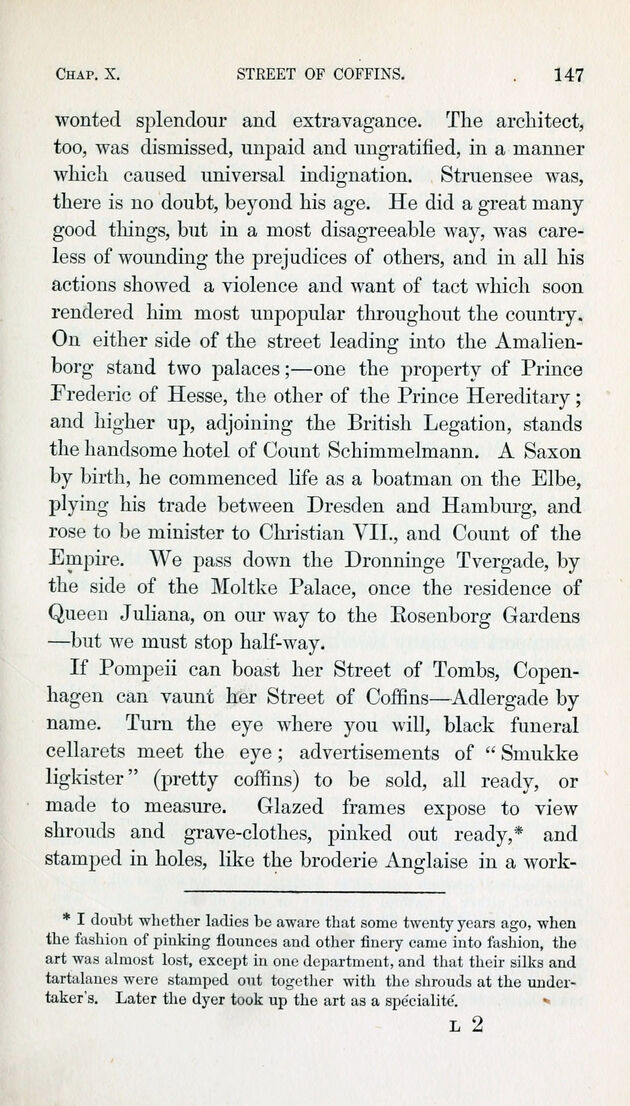
Full resolution (JPEG) - On this page / på denna sida - X

<< prev. page << föreg. sida << >> nästa sida >> next page >>
Below is the raw OCR text
from the above scanned image.
Do you see an error? Proofread the page now!
Här nedan syns maskintolkade texten från faksimilbilden ovan.
Ser du något fel? Korrekturläs sidan nu!
This page has never been proofread. / Denna sida har aldrig korrekturlästs.
Chap. X. STREET OF COFFINS. 147
wonted splendour and extravagance. The architect,
too, was dismissed, unpaid and ungratified, in a manner
which caused universal indignation. Struensee was,
there is no doubt, beyond his age. He did a great many
good things, but in a most disagreeable way, was
careless of wounding the prejudices of others, and in all his
actions showed a violence and want of tact which soon
rendered him most unpopular throughout the country.
On either side of the street leading into the
Amalienborg stand two palaces;—one the property of Prince
Frederic of Hesse, the other of the Prince Hereditary;
and higher up, adjoining the British Legation, stands
the handsome hotel of Count Schimmelmann. A Saxon
by birth, he commenced life as a boatman on the Elbe,
plying his trade between Dresden and Hamburg, and
rose to be minister to Christian VIL, and Count of the
Empire. We pass down the Dronninge Tvergade, by
the side of the Moltke Palace, once the residence of
Queen Juliana, on our way to the Rosenborg Gardens
—but we must stop half-way.
If Pompeii can boast her Street of Tombs,
Copenhagen can vaunt her Street of Coffins—Adlergade by
name. Turn the eye where you will, black funeral
cellarets meet the eye; advertisements of “ Smukke
ligkister” (pretty coffins) to be sold, all ready, or
made to measure. Glazed frames expose to view
shrouds and grave-clothes, pinked out ready,* and
stamped in holes, like the broderie Anglaise in a work-
* I doubt whether ladies be aware that some twenty years ago, when
the fashion of pinking flounces and other finery came into fashion, the
art was almost lost, except in one department, and that their silks and
tartalanes were stamped out together with the shrouds at the
undertaker’s. Later the dyer took up the art as a spécialité. *
L 2
<< prev. page << föreg. sida << >> nästa sida >> next page >>